- Blog
- How the Industry Views Website Popups in 2025: Insights from Industry Experts & Real Users
How the Industry Views Website Popups in 2025: Insights from Industry Experts & Real Users
-
Nikolett Lorincz
- Conversion
- 6 min read
Table of Contents
Website popups—are they a lead generation goldmine or an annoying roadblock to a smooth user experience?
This debate has been raging for years, and as we move into 2025, the conversation is far from over.
To get a clearer picture, we surveyed marketers, ecommerce store owners, and everyday users to understand how popups are perceived today.
Here are the results.
The numbers
When asked about their stance on popups, respondents offered a mixed yet insightful perspective:
- 54.2% said popups are great for list building.
- 23.5% admitted they find popups annoying but effective.
- 22.3% outright hate them, citing a negative impact on user experience.

While more than half of respondents appreciate popups for their ability to capture leads, a significant portion still acknowledges their downsides.
The key takeaway? Popups aren’t inherently bad, but the way they’re implemented matters.
Industry experts weigh in
While the data reveals a divided opinion on popups, industry professionals offer deeper insights into why they remain a crucial marketing tool.
Let’s dive into their perspectives.
Popups as a non-negotiable
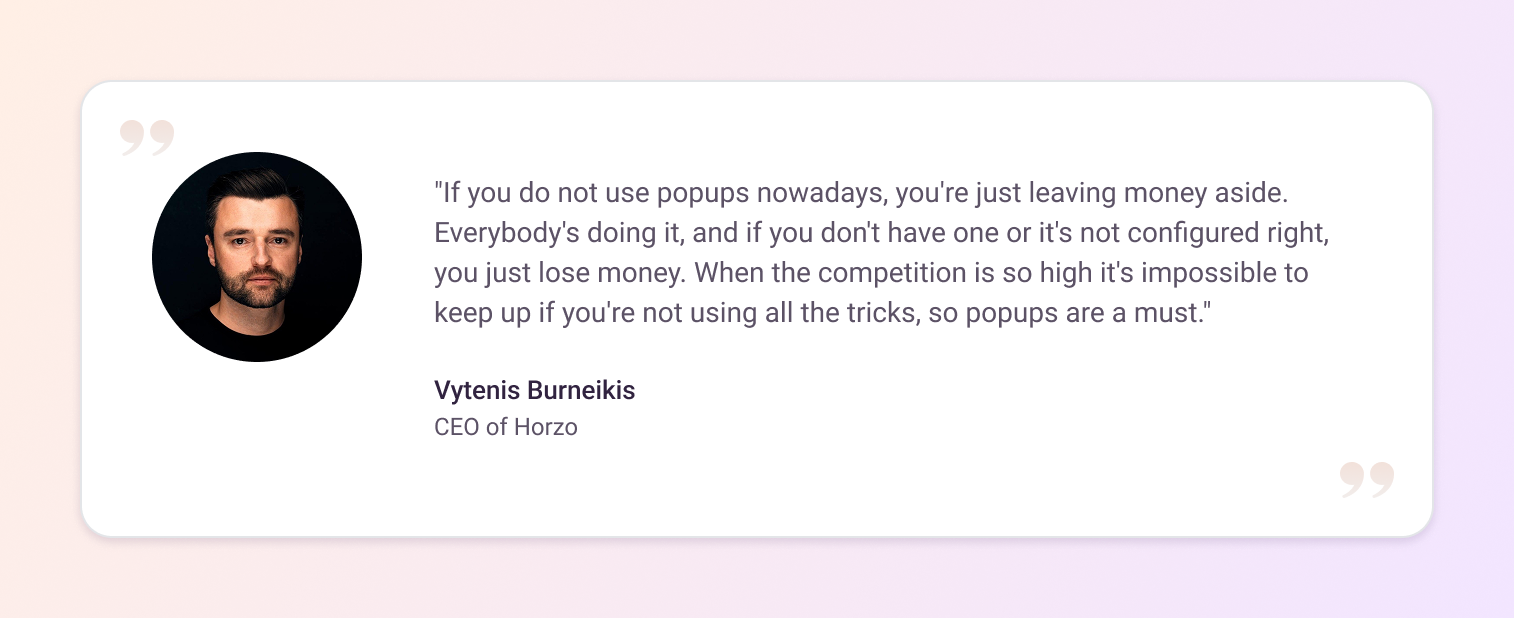
According to Vytenis Burneikis, CEO of Horzo, not using popups is simply leaving money on the table—particularly in a competitive market:
“If you do not use popups nowadays, you’re just leaving money aside. Everybody’s doing it, and if you don’t have one or it’s not configured right, you just lose money. When the competition is so high it’s impossible to keep up if you’re not using all the tricks, so popups are a must.”
His straightforward assessment underscores a shift in mindset: popups have become a “must” in many marketing playbooks.
From this perspective, the potential revenue gained often outweighs any perceived drawbacks—as long as the popups are configured properly and deployed with the user in mind.
Striking a balance: relevance & timing
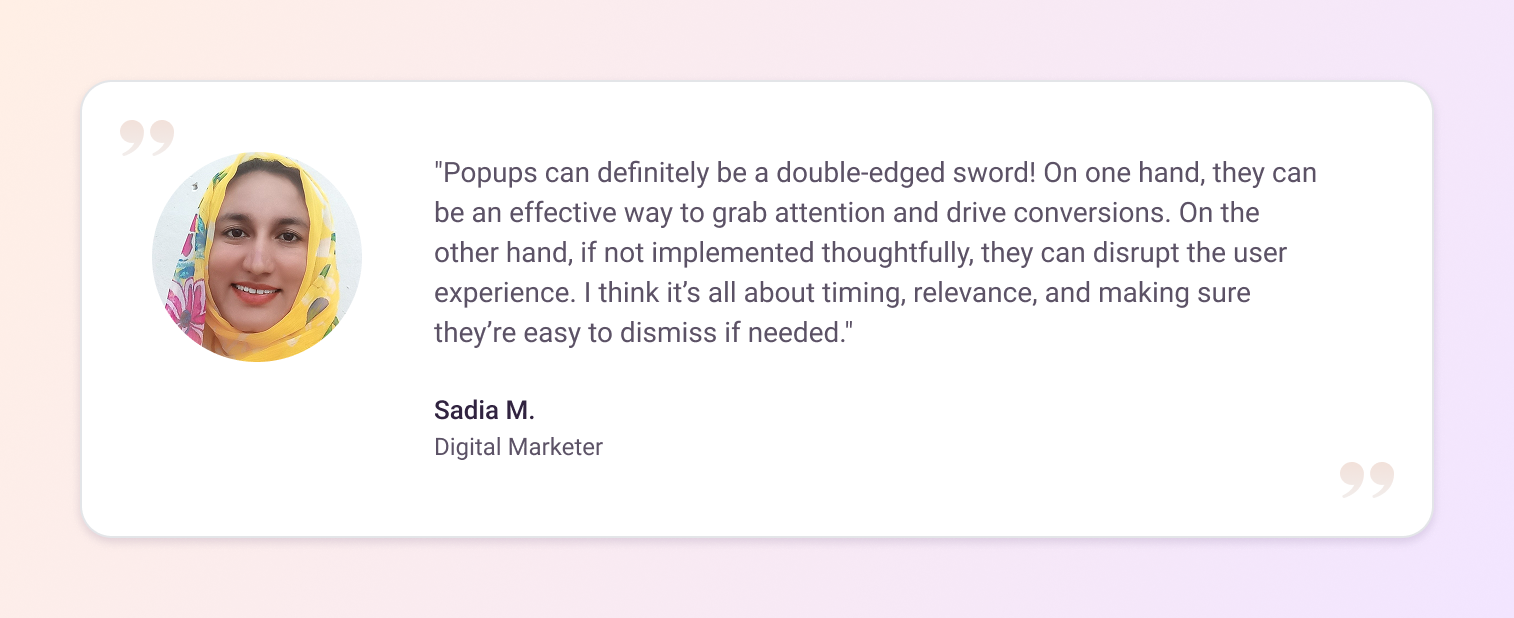
Sadia M., a seasoned digital marketer and email marketing strategist, believes that while popups can be effective, they need to be used thoughtfully:
“Popups can definitely be a double-edged sword! On one hand, they can be an effective way to grab attention and drive conversions. On the other hand, if not implemented thoughtfully, they can disrupt the user experience. I think it’s all about timing, relevance, and making sure they’re easy to dismiss if needed.”
Her perspective aligns with a growing industry trend: popups must be strategically placed to avoid frustrating users while capturing valuable leads.
The psychology of popups: making them work
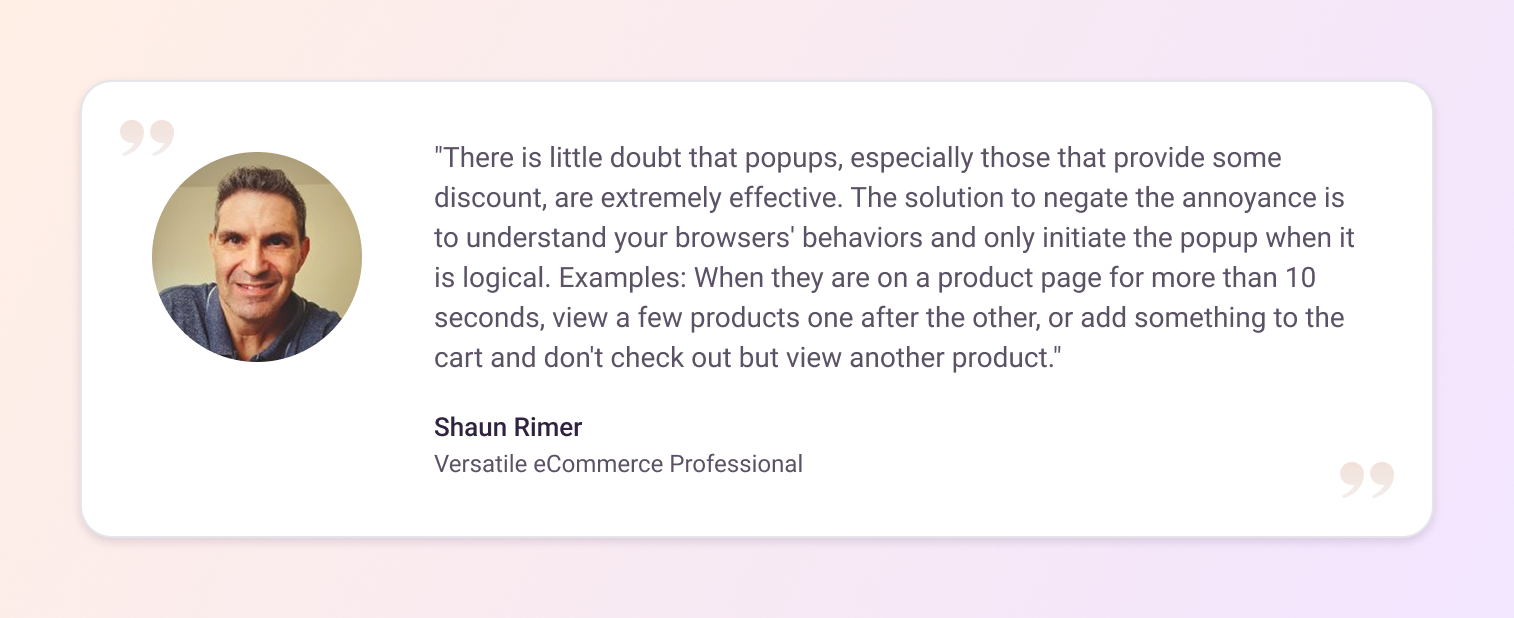
Shaun Rimer, an experienced ecommerce professional, emphasizes the importance of understanding user behavior:
“There is little doubt that popups, especially those that provide some discount, are extremely effective. The solution to negate the annoyance is to understand your browsers’ behaviors and only initiate the popup when it is logical. Examples: When they are on a product page for more than 10 seconds, view a few products one after the other, or add something to the cart and don’t check out but view another product.”
Rimer suggests that well-timed popups can feel less intrusive and more like a helpful nudge rather than an interruption.
He also mentions alternative approaches, such as discreet floating banners, which display offers without obstructing the user experience.
What Reddit users say
Reddit, the home of brutally honest opinions, has plenty to say about website popups.
Here are the main takeaways from user discussions:
1. User experience concerns
Many users express frustration with intrusive popups, complaining that they can disrupt the browsing experience and deter engagement.
In one discussion, a user lamented the overuse of popups, suggesting that excessive interruptions can lead to negative perceptions of a website.
2. Reluctant acknowledgment of effectiveness
Despite personal aversions, some users acknowledge that popups can yield positive results when implemented thoughtfully.
One Redditor noted reluctantly, “yes, subscriber popups work even if they annoy most people,” indicating a begrudging acceptance of their utility in certain contexts.
3. Strategic implementation is key
The consensus suggests that the success of popups hinges on their strategic deployment. Timing, relevance, and non-intrusiveness are crucial factors.
As one user mentioned, “I’ve tried exit-intent popups, and while they can have mixed feedback, they can be effective if used strategically.”
4. Measurable benefits in ecommerce
In the ecommerce sector, data-driven approaches to popups have shown tangible benefits.
One contributor shared, “We have exactly 5-10% daily conversion rate on these banners. From these people, 30-40% will make a purchase within one week,” underscoring the potential return on investment when popups are used effectively.
What this means for 2025
So, what’s the final verdict on website popups in 2025?
It all comes down to how you use them. Here are the key takeaways:
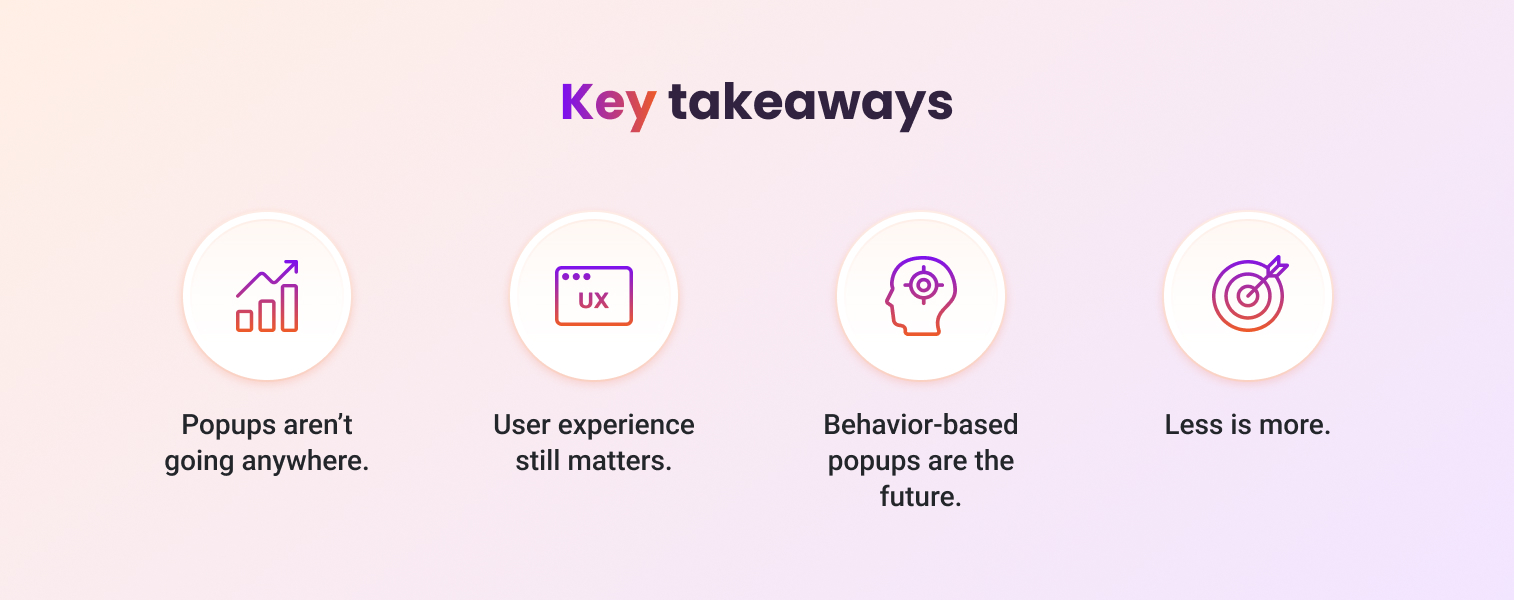
- Popups aren’t going anywhere. Most marketers agree they’re a must-have for lead generation and conversions.
- User experience still matters. Poorly timed, intrusive popups will drive visitors away.
- Behavior-based popups are the future. Using data to trigger popups at the right moment can improve engagement and conversion rates.
- Less is more. Alternative formats like floating banners and side popouts can reduce disruption while still achieving marketing goals.
In short, popups can be a game-changer—as long as they’re done right. The challenge for marketers in 2025? Finding the sweet spot between effectiveness and a great user experience.
If you’d like to create high-converting popups that are user-friendly, get started with these templates:
Migration has never been easier
We made switching a no-brainer with our free, white-glove onboarding service so you can get started in the blink of an eye.
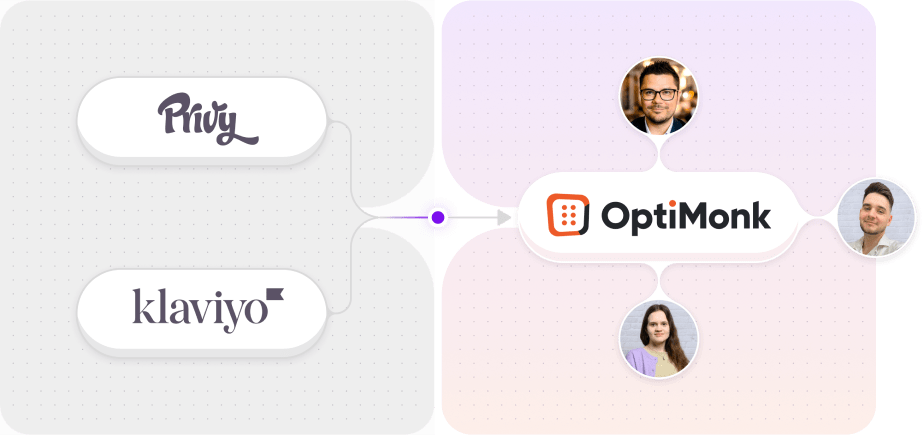
What should you do next?
Thanks for reading till the end. Here are 4 ways we can help you grow your business:
Boost conversions with proven use cases
Explore our Use Case Library, filled with actionable personalization examples and step-by-step guides to unlock your website's full potential. Check out Use Case Library
Create a free OptiMonk account
Create a free OptiMonk account and easily get started with popups and conversion rate optimization. Get OptiMonk free
Get advice from a CRO expert
Schedule a personalized discovery call with one of our experts to explore how OptiMonk can help you grow your business. Book a demo
Join our weekly newsletter
Real CRO insights & marketing tips. No fluff. Straight to your inbox. Subscribe now
Nikolett Lorincz
- Posted in
- Conversion
Partner with us
- © OptiMonk. All rights reserved!
- Terms of Use
- Privacy Policy
- Cookie Policy
Product updates: January Release 2025








